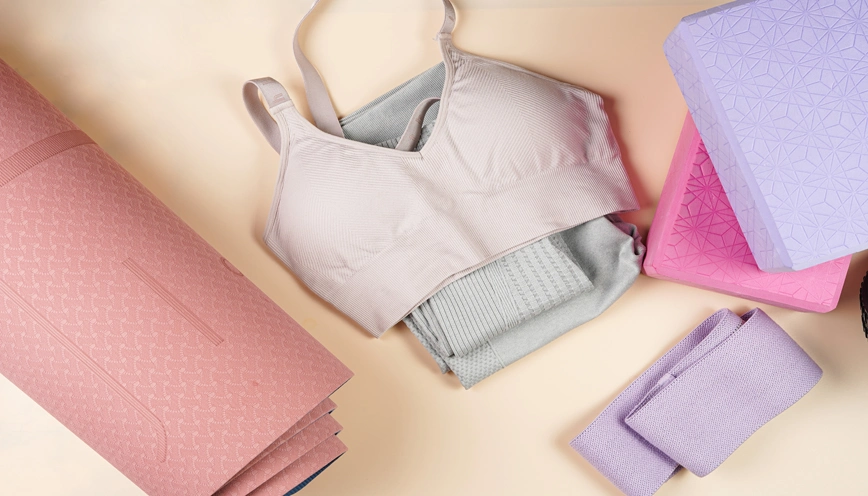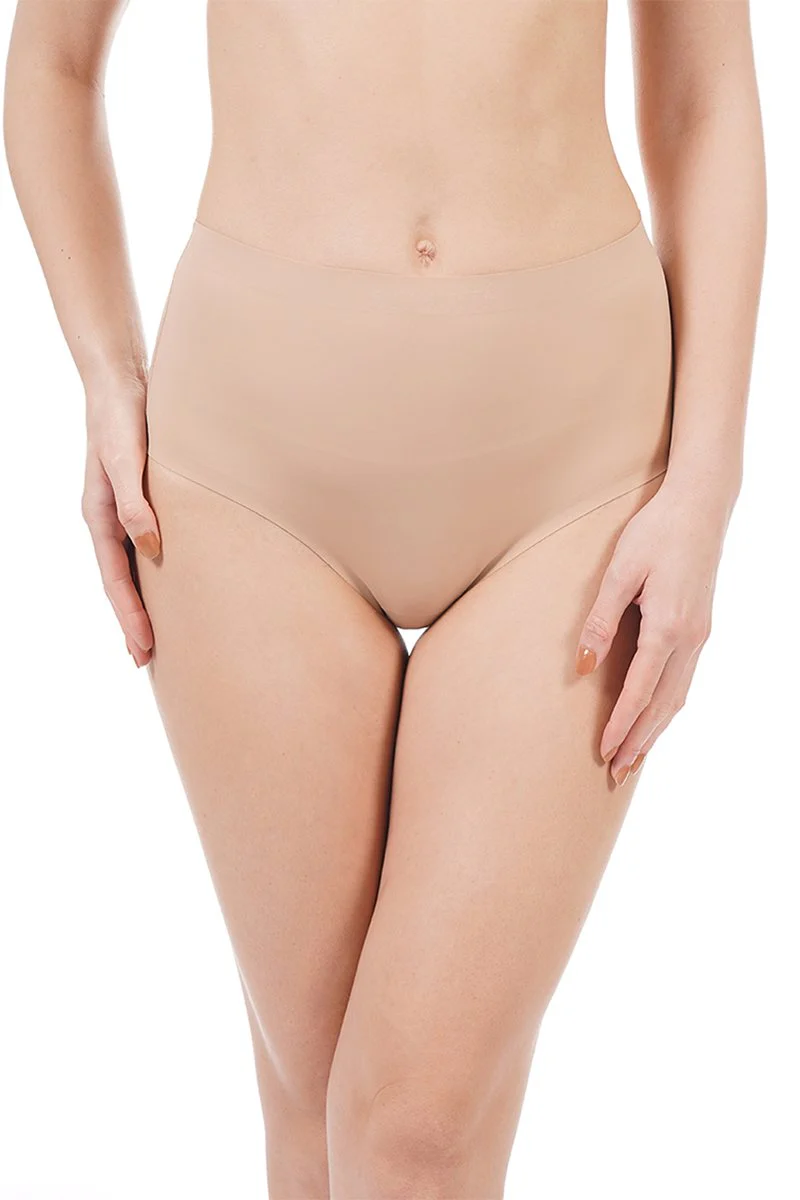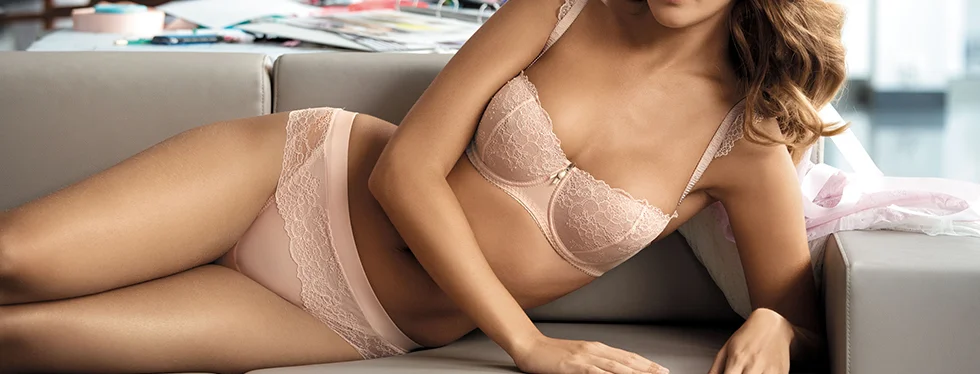The Ultimate Lingerie Fabric Guide: What’s Best for You?
Introduction
You can have a bra that fits you perfectly, but if it’s made from a scratchy, non-breathable fabric, you’ll still be counting down the minutes until you can take it off. The feel of lingerie against your skin is just as important as the fit. The fabric determines everything: how it breathes, how it stretches, how it supports you, and how it makes you feel.
But the world of fabrics can be confusing. What’s the real difference between modal and microfiber? Is lace ever actually comfortable? And is cotton always the best choice?
Welcome to your ultimate lingerie fabric guide. We’re breaking down the most common materials you’ll find in your underwear drawer, explaining their pros and cons, and helping you become an expert in choosing the perfect fabric for your needs, whether that’s all-day comfort, a seamless look, or a touch of glamour.
The Everyday Hero: Cotton
- What It Is: A natural fiber harvested from the cotton plant, known for its softness and breathability.
- Why You’ll Love It:
- Extremely Breathable: Allows air to circulate, which helps keep you dry and is great for vaginal health.
- Hypoallergenic: Very gentle on the skin and the best choice for those with sensitivities.
- Durable: High-quality cotton is strong and can withstand regular washing.
- Good to Know:
- It absorbs moisture rather than wicking it away, so it’s not ideal for intense workouts.
- It can be slow to dry and may create visible lines under tight clothing.
- Best For: Everyday underwear, sleep bras, and anyone with sensitive skin.
The Super-Soft One: Modal & Tencel
- What It Is: A type of rayon fabric made from the pulp of beech trees. Tencel is a similar, branded version made from eucalyptus trees. Both are considered semi-synthetic but are derived from natural, sustainable sources.
- Why You’ll Love It:
- Incredibly Soft: Has a luxurious, silky-smooth feel that drapes beautifully.
- Cool to the Touch & Breathable: Great for hot sleepers and warm climates.
- Resistant to Shrinking & Pilling: Holds its shape and softness better than cotton over time.
- Good to Know:
- It’s often more expensive than cotton.
- It requires a more delicate wash cycle to maintain its luxurious feel.
- Best For: Pajamas, lounge bras, and comfortable everyday panties where softness is the top priority.
The Seamless Workhorse: Microfiber (Nylon & Polyester)
- What It Is: A synthetic fabric made from extremely fine fibers, typically nylon or polyester. This is the workhorse of the modern bra industry.
- Why You’ll Love It:
- Seamless & Smooth: Its slick surface allows clothing to glide over it, making it perfect for t-shirt bras and no-show panties.
- Durable & Stretchy: Holds its shape exceptionally well and provides a secure, body-hugging fit.
- Moisture-Wicking: It pulls moisture away from the skin, making it great for sports bras and everyday activity.
- Good to Know:
- It is not as breathable as natural fibers like cotton, which can be a concern for some.
- Look for styles that have a cotton gusset (the lining in the crotch area) for better hygiene.
- Best For: T-shirt bras, sports bras, shapewear, and any underwear where a seamless, invisible look is key.
The Beautiful One: Lace
- What It Is: A decorative, web-like fabric. Modern lingerie uses high-quality stretch lace, which is blended with spandex or elastane for a comfortable, body-hugging fit.
- Why You’ll Love It:
- Unmatched Beauty: Adds a touch of elegance, romance, and sexiness to any garment.
- Surprisingly Functional: High-quality stretch lace can provide gentle support and lie flat under clothes, preventing digging.
- Good to Know:
- There is a huge difference between cheap, scratchy lace and soft, high-quality lace. Invest in good brands.
- It’s a delicate fabric that requires hand washing or a mesh bag to prevent snags.
- Best For: Sexy lingerie sets, special occasion pieces, and adding a beautiful detail to everyday underwear.
The Glamorous One: Satin
- What It Is: A fabric defined by its weave, which creates a glossy, smooth surface. It can be made from silk (the ultimate luxury) or, more commonly in lingerie, polyester.
- Why You’ll Love It:
- Luxurious Feel: The smooth, cool feel of satin against the skin is pure glamour.
- Beautiful Drape: It hangs and moves beautifully, making it perfect for robes and chemises.
- Good to Know:
- Polyester satin is not breathable and can trap heat and moisture.
- It has no stretch, so a proper fit is crucial.
- Best For: Robes, chemises, babydolls, and special occasion lingerie where aesthetics are the priority.
Quick-Reference Fabric Chart
| Fabric | Breathability | Softness | Stretch | Best For |
| Cotton | High | High | Low | Everyday Health & Comfort |
| Modal | High | Very High | Medium | Loungewear & Hot Sleepers |
| Microfiber | Low | Medium | High | Seamless Look & Sports |
| Lace | Medium | Varies | High | Beauty & Special Occasions |
| Satin | Very Low | High | None | Glamour & Robes |
Conclusion: Choose What’s Best for YOU
Understanding fabrics transforms you from a passive shopper into an informed buyer. Now you can look at a label and know exactly how a piece will feel and perform. If you need a breathable workhorse, reach for cotton. If you crave cloud-like softness, look for modal. And if you want a flawless look under a t-shirt, microfiber is your best friend.
Now that you’re a fabric expert, why not put your new knowledge to the test? If you’re looking for the ultimate in breathable comfort, check out our guide to The Best Plus-Size Cotton Underwear, or if a seamless look is your priority, explore our recommendations in The 5 Best Minimizer Bras for a Streamlined Look.





